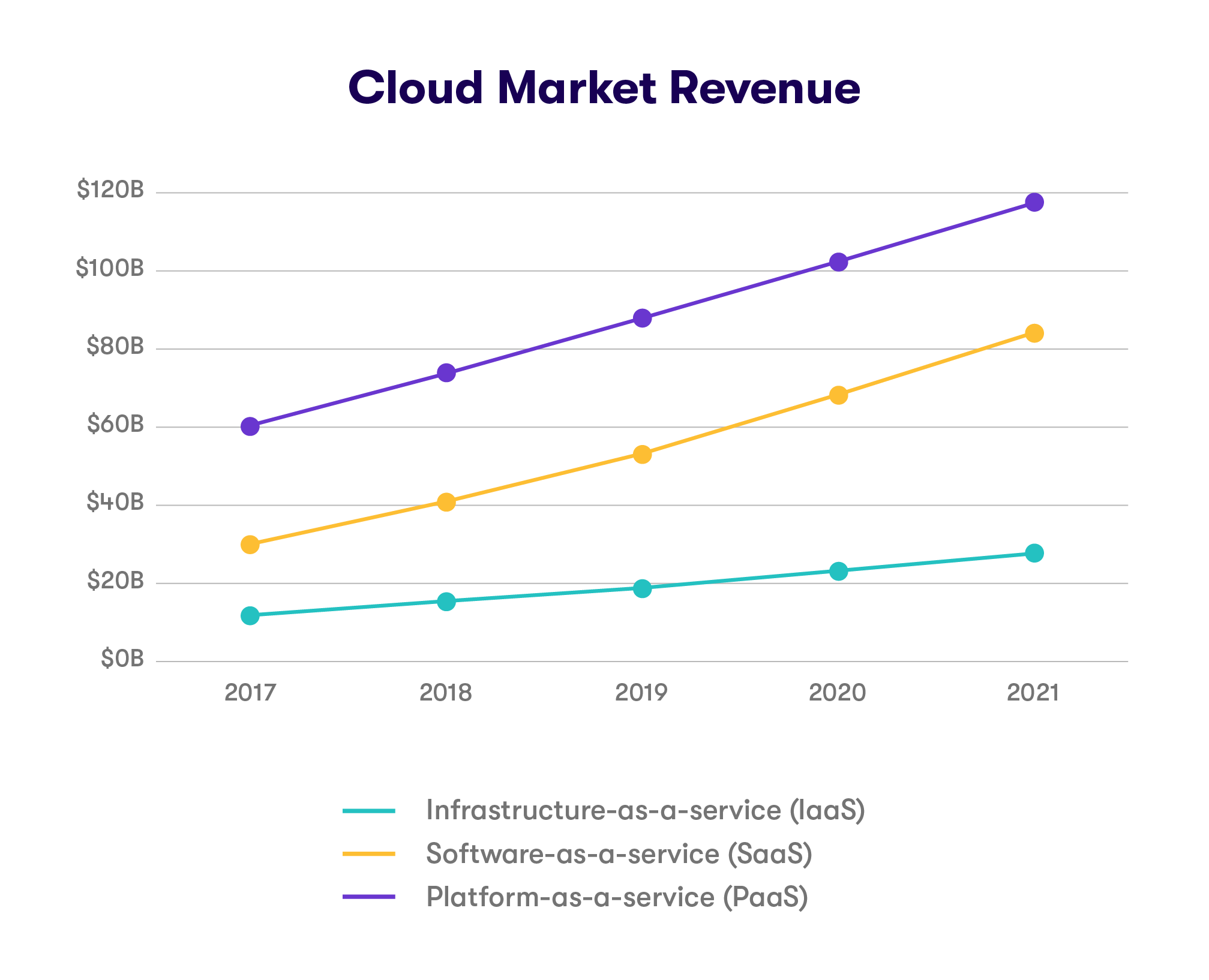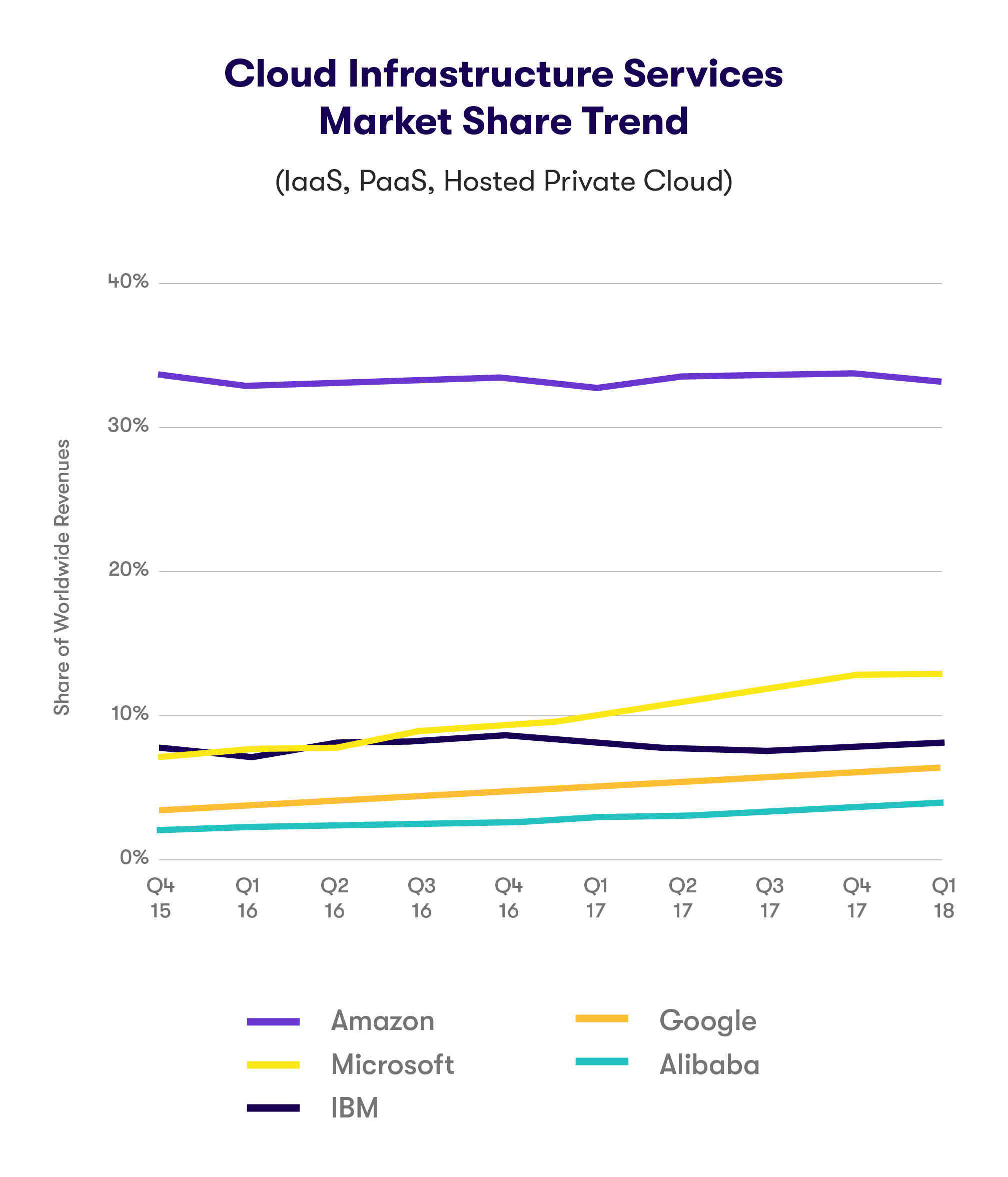Sep 10, 2018
Cloud Computing Runs the World
The cloud truly does rule everything around you. Here’s how.

In 1993, hip-hop group Wu-Tang Clan released an album that included a song called “C.R.E.A.M.”, an acronym for “cash rules everything around me.” While money, no doubt, still greases society’s wheels, a lot has changed in 25 years.
These days, Wu-Tang Clan could alter the lyrics to say the “cloud rules everything around me,” and probably make just as much sense.
What is the cloud?
The cloud lets you save your homework without a USB thumb drive, to binge-watch “Ozark” on Netflix, and even allows President Trump to fire off his famous early morning tweets.
But what is it? Despite calling it the cloud, it’s not actually a wall of cumulus clouds in the sky.
Cloud computing is a method of storing, accessing, and syncing data and software through the internet, rather than on the hard drive of a local computer. So, the “cloud” refers to a global network of computers, or servers, that store information, and that we access remotely from devices such as laptops, desktop computers, and smartphones.
For example, if you want to watch a movie on-demand through Netflix, you’re using the cloud to access it—the movie isn’t stored in or on your TV or laptop. You have to request it from Netflix’s servers to watch it. Similarly, every time you log in to a free email service such as Google or Yahoo, you’re accessing it in the cloud.
How the cloud is used
With cloud services becoming more universal, increasing numbers of businesses and industries are jumping on board. Companies that previously lacked IT resources can now purchase them affordably, and can even test and market new products and services without hiring armies of software developers and engineers, or by purchasing huge numbers of new servers themselves.
They can do this either through the public or private cloud. The public cloud is network space any business or individual can use from a cloud provider. A private cloud is a dedicated space that companies can purchase from providers, for their own exclusive use.
In addition to using the cloud to stream on-demand TV and movies, we use it to log into our social media networks, and see what’s happening with our friends and families. Many people also use it for work, by creating, saving, and sharing documents through Google Docs, for example, or storing a customer’s information in a Salesforce database.
The cloud is at work all around us, and in ways most people never actually see. Cloud computing has allowed us to become untethered, thanks to ubiquitous wireless internet networks, small devices like smartphones and tablets, and a smattering of digital products and services.
The cloud computing industry is typically broken down into sub-industries, including:
- Infrastructure-as-a-service (IaaS), which is the hosting of server networks (example: Amazon Web Services)
- Software-as-a-service (SaaS), offering software over the web (example: Salesforce)
- Platform-as-a-service (PaaS), creating a platform available over the web (example: Facebook)
All of these services are expected to continue growing in coming years, and become increasingly profitable for the companies working in the industry, according to industry data:

We can now work, shop, order meals, send messages to our friends, schedule a yoga class, and listen to music on Spotify, and even play video games all because of the cloud.
Cloud computing’s biggest players
The idea of cloud computing may seem new, but it’s actually been around for some time. In the 1950s, computer scientists first developed the technology, which predated the modern internet.
The cloud didn’t develop into a commercial enterprise until the early 2000s when cloud computing company Salesforce became the first major cloud-based company, and also the first to market it as an advantage.
Other companies followed suit, and today, many products and services that we use every day are available only through the internet.
Some of the biggest and most important companies in the cloud computing industry include:
- Amazon (Amazon Web Services)
- Microsoft (Azure)
- Google (Google Cloud Platform)
- Oracle
- SAP
- IBM
And in terms of cloud infrastructure services—that is, the companies that actually host the servers that store information that we all request from our devices—just five companies including Amazon and Microsoft have cornered the market, according to industry data.

And as the cloud becomes bigger and consumers rely on it more, the potential profits for cloud computing companies continues to grow, too.
Companies providing cloud infrastructure services like Amazon and IBM make money by selling server space and computing power to other companies that use it to provide a product or service, such as Netflix, cloud storage company Dropbox, or social media networks Twitter and Facebook.
Cloudy, with a chance of…
The future of the cloud computing industry actually seems pretty sunny.
In 2018, the worldwide public cloud services market is expected to grow more than 21% from 2017 to become a roughly $186 billion market, according to the business consultancy Gartner. And by 2020, the market for cloud services could increase to $411 billion.
But while cloud computing seems set for growth, for those looking to invest in the industry, there are still reasons for caution.
Security is one factor. As the volume of personal details about consumers continues to flood online, the industry has experienced multiple large-scale data breaches over the past few years. One of the most infamous was the 2014 iCloud hacking scandal, in which numerous celebrities’ Apple accounts were accessed and their personal photos were stolen and leaked.
Consumer confidence is another potential hurdle. For example, more than two-thirds of U.S. consumers are afraid companies aren’t doing enough to protect their personal data in the cloud, according to survey data.
And there’s also the possibility that governments could introduce new regulatory standards, particularly when it comes to companies using the cloud to conduct financial services, which could create roadblocks for the industry.
Despite these issues, the future of the industry seems anything but cloudy.
You can invest in companies working with and in the cloud computing industry on Stash.
Related Articles

The 12 Largest Cannabis Companies in 2024

Saving vs. Investing: 2 Ways to Reach Your Financial Goals

How To Invest in the S&P 500: A Beginner’s Guide for 2024

Stock Market Holidays 2024

The 2024 Financial Checklist: A Guide to a Confident New Year

How To Plan for Retirement








